The Decisions That Made 'The Shawshank Redemption' a Perfect Adaptation
On the film's 30th anniversary, let's break down how Frank Darabont's screenplay transformed Stephen King's novella into such a powerful cinematic experience
The Shawshank Redemption was released on September 24th, 1994 – thirty years ago this week. What you might not remember, though, is that this beloved adaptation of Stephen King’s novella Rita Hayworth and Shawshank Redemption (1982) was a box office bomb upon release. Instead, word-of-mouth turned it into a hit on home video. By the time Awards Season rolled around, it was nominated for a Best Picture Oscar and, more relevant to the point of this article, a Best Adapted Screenplay Oscar for writer-director Frank Darabont. The Shawshank Redemption was a passion project of Darabont’s – in fact, he personally purchased the rights to the King’s novella back in ’87 – and I believe key decisions he made about how to adapt the author’s work explain the film’s enduring popularity.
Such changes wouldn’t be especially significant to point out in most cases, as adaptations always change their source material much to purists’ chagrin, but The Shawshank Redemption is an astoundingly accurate adaptation – often lifting whole blocks of dialogue for scenes that are, for the most part, dramatizations of what King wrote. Understanding Darabont’s narrative decisions could transform how you decide to adapt literary and comic book works for screen yourself. Let’s take a look now at how he did it by focusing on six key points. These are headline changes, you might say (with one exception). Each headline involves several scenes that modify King’s original story or outright alter it to enhance their dramatic impact in extraordinary ways.
THE ANTAGONISTS
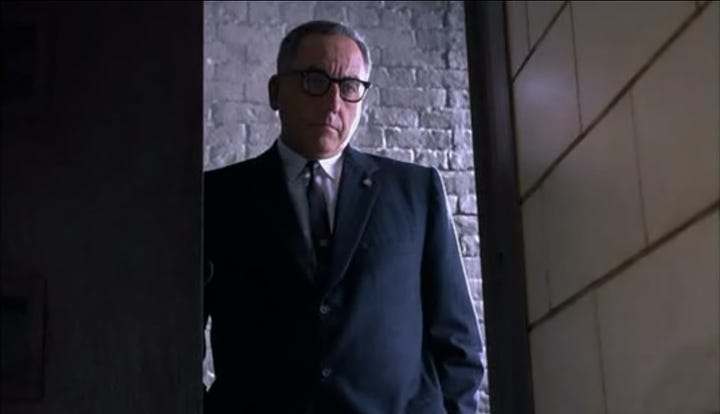
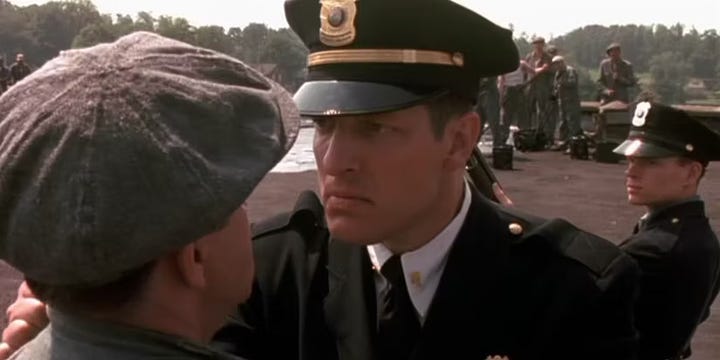
In Stephen King’s novella, Shawshank State Prison functions like prisons do in the real world. Meaning, guards and wardens come and go. Several, in fact. Frank Darabont solves this problem of rotating antagonists by establishing two permanent fixtures in the prison and protagonist Andy Dufresne’s life: the homicidal guard captain Byron Hadley and the pious, but Biblical cruel warden Samuel Norton.
Andy’s antagonist in the novella isn’t centralized in a single character or even characters. It’s the prison itself, or rather imprisonment and what it does to his soul. He must overcome “the walls” that constantly threaten to sap his will to hope. It’s a metaphor for how we all choose to live. This remains in the film, of course, but the metaphor provides the film’s theme instead. In terms of an obstacle onscreen, Andy requires a physical threat to overcome – one that audiences can learn to hate and, when they get their comeuppance, cheer for. Darabont rightly gives it to them, resulting in, I believe, a much more satisfying ending than the one offered up in King’s novella.
An extension of this change from the novella is the con Andy pulls on the warden and Hadley to give the audience the aforementioned comeuppance. King never delivers any punishment to the two men in his story, but Darabont fixes that in his adaptation.
For context, Andy was a banker in his former life and, in prison, has helped Norton launder hundreds of thousands of dollars. In the novella, Andy used this as an opportunity to simply steal all that money upon his escape – money he steals to start over in Mexico. In the film, Darabont still has Andy steal Norton’s money, but he also has him send evidence of Norton’s financial misdoings and Hadley’s violent crimes to the press. When the authorities come to arrest the two men, Norton shoves a pistol under his chin and splatters the window behind him with his brains. This, I hope you can see, is a much more satisfying ending for audiences who have just watched Andy survive more than two hours of gang rape, physical assault, and time “in the hole”.
THE MYSTERY
Through most of Rita Hayworth and Shawshank Redemption, Stephen King lets his readers wonder whether Andy Dufresne murdered his wife and her lover – the crime that got Andy sentenced to life in prison. But late in the novella, a new inmate by the name of Tommy Williams arrives at Shawshank State Prison. Tommy unwittingly carries with him evidence that Andy is, in fact, innocent - a shock to Andy’s friends. In turn, Andy goes to Warden Norton, who, rather than lose his money launderer, quietly has Tommy moved to another prison before the truth can be pursued.
Frank Darabont must’ve read this and thought, “Well, that’s a wasted opportunity.” In his adaptation, he expands the role of Tommy, giving it real narrative heft. Andy helps Tommy, a wayward young criminal in need of guidance, study for his GED so that Tommy might have a chance when he gets out soon. The kid provides renewed hope to Andy, you might say. This makes it that much more painful – and shocking – when Captain Hadley shoots Tommy dead. See, when Norton realizes his money laundering could be revealed by Andy’s innocence coming to light, he has his top guard put a bullet in Tommy’s chest.
If you didn’t hate Norton and Hadley before, you sure as hell do now.
THE ACT TURNS
The Shawshank Redemption is a three-act film, which means it contains an Act 1 Turn that sets up the film and its central narrative conflict and an Act 2 Turn, following a Low Point, that sees the protagonist make a final decision about how to resolve that conflict. What is different about this film, though, is how much it relies on con/heist film tropes to pull off its Act 3 twists – Andy Dufresne’s epic escape from Shawshank State Prison and his parting vengeance against Warden Norton and Captain Hadley. It’s a series of sleight-of-hand tricks that ensure you, like Norton, keep missing what’s right in front of your face.
The greatest example of this is how Frank Darabont’s Act 1 Turn takes place off-screen. Meaning, the film structurally has no Act 1 Turn until you, the viewer, reach Act 3 and discover what Darabont just outright hid from you – which is Andy discovering that the walls of his prison cell are soft and susceptible to his tiny rock hammer.
In the screenplay, Act 1 ends with Andy carving his name into the wall. Nothing more.
From there, we jump to a screening of Gilda (1946) for inmates; here, Andy asks his best friend Red, a procurer of illicit items, if he can get Andy Rita Hayworth (the star of Gilda). This request is actually how the novella begins. Darabont moves it to this point because, in hindsight, we will realize it was the first step in Andy’s plan to tunnel his way through Shawshank’s walls.
The Shawshank Redemption’s Act 2 Turn is another inspired decision. While it echoes Stephen King’s placement of it in his novella, its location in the film lands like an atom bomb in Andy’s character arc entirely because of the violent changes to the Tommy Williams storyline (and another prior change, which I’ll discuss in the next section). Tommy has just been murdered at this point, robbing Andy of a friend and any chance of proving his innocence at last. A final decision has to be made. A decision to risk everything for a chance at freedom. Or, as Andy tells Red, repeating one of the most iconic lines King has ever written, “Get busy living or get busy dying.”
Andy Dufresne chooses life.
THEME
What I’ve just described is the theme of both Rita Hayworth and Shawshank Redemption and its adaptation. It’s also the single greatest reason both have made such an impact on audiences over the years. When faced with despair, do you crawl up into a ball and give up or do you fight for a life worth living?
But Frank Darabont makes some other tweaks to Stephen King’s novella that also help the line “get busy living or get busy dying” land that much harder. In addition to the murder of Tommy Williams, the other major narrative change is the much-expanded role Brooks Hatlen plays in the film. Brooks is an elderly librarian in the adaptation; he’s spent three times as much of his life inside Shawshank as he’s spent outside of it. When he gets paroled, the idea of getting out, of confronting such an alien life beyond Shawshank State Prison’s walls, he attacks a friend to try to get his parol retracted. On the outside, he can’t contend with how the world has changed. Ultimately, he climbs onto a table in his hotel room, carves “Brooks was here” into a support beam, and hangs himself.
This is the danger Red will face if he ever gets paroled.
THE FINAL SCENE
Rita Hayworth and Shawshank Redemption, like its filmic adaptation, is narrated by Red. In the novella, the story remains wholly Andy Dufresne’s though, at least until the final pages when Red is finally paroled and must contend with life on the outside and the question of whether he should follow Andy to Mexico. It ends with Red boarding a bus, hoping to see his friend again. It’s a beautiful, ambiguous conclusion that lets you finish the story in your imagination however you see fit.
Frank Darabont handles the film differently. For starters, the whole third act is told from Red’s perspective and shifts the narrative entirely to him and his remaining time at Shawshank State Prison. He has Red audition for his parole three times (another change from the book), showing his growing boredom with the futile idea as well as how he has come to terms with the violent young man he once was. Because Brooks Hatlen’s parole and suicide was so movingly established already, audiences react to Red’s surprising release with far more trepidation. They know what is at risk now. The stakes are so much higher. Will Red hang himself? In fact, when Red finally makes his decision about what to do next – get busy living or get busy dying – he climbs up onto the same table Brooks did earlier in the film. But instead of watching him drop from a rope as Brooks did, Red leaves the room behind with “So was Red” carved into the support beam next to Brooks’s name.
At this point, Red boards a bus just like in the novella and — in Darabont’s adaptation — actually reaches Mexico and the Pacific. There, he walks barefoot along a beach – toward Andy, whom we find working on a boat. Andy made it. Red made it. I’m not crying, you’re crying. Fuck, we all are, aren’t we? Because this change, as “Hollywood notey” as it might seem, is the happy ending audiences need. It’s cathartic. It’s elevating. It’s the perfect visual dramatization of the film’s indelible theme – get busy living or get busy dying.
Adaptations come in all shapes and sizes. Some reimagine a story from top to bottom, clubbing it into submission, “making it theirs”. Some carefully bend and twist a story, to make it conform to the big or small screen. Others are much more surgical — even graceful — such as Frank Darabont and his adaptation of Stephen King’s Rita Hayworth and Shawshank Redemption. Hopefully, this breakdown has helped you better understand how he pulled it off — and maybe even begin to imagine how to accomplish the same yourself.
You can read Frank Darabont’s screenplay for The Shawshank Redemption here.
If this article added anything to your life but you’re not up for a paid subscription, consider buying me a “coffee” so I can keep as much of this newsletter free as possible for the dreamers who couldn’t afford it otherwise.
If you enjoyed this article, these other three might also prove of interest to you:




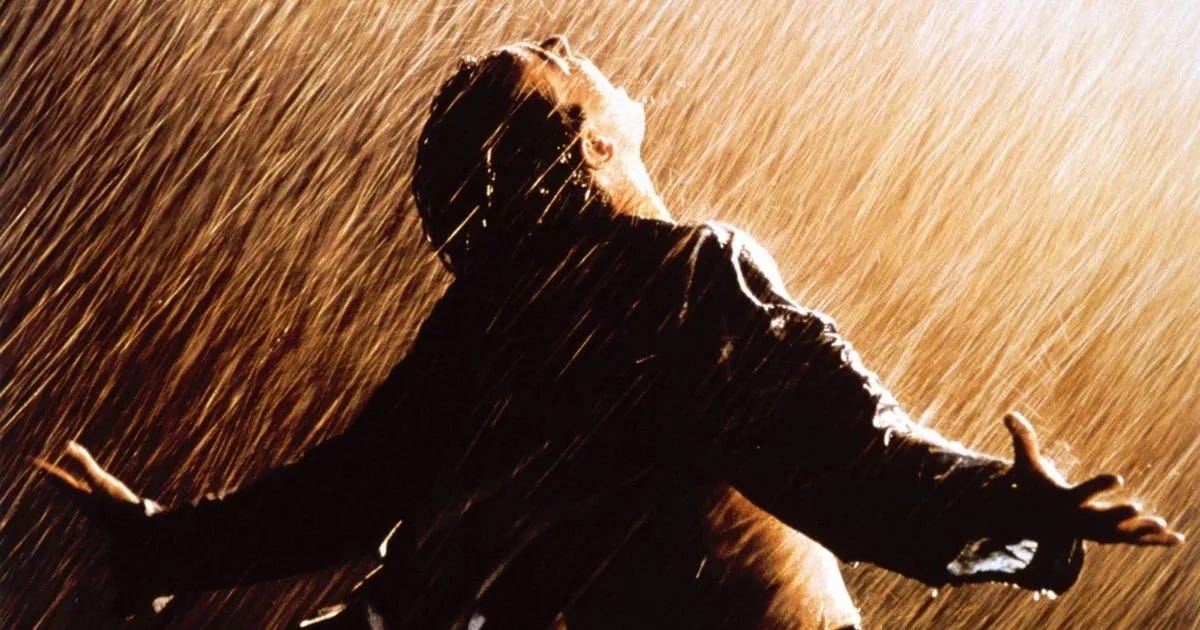
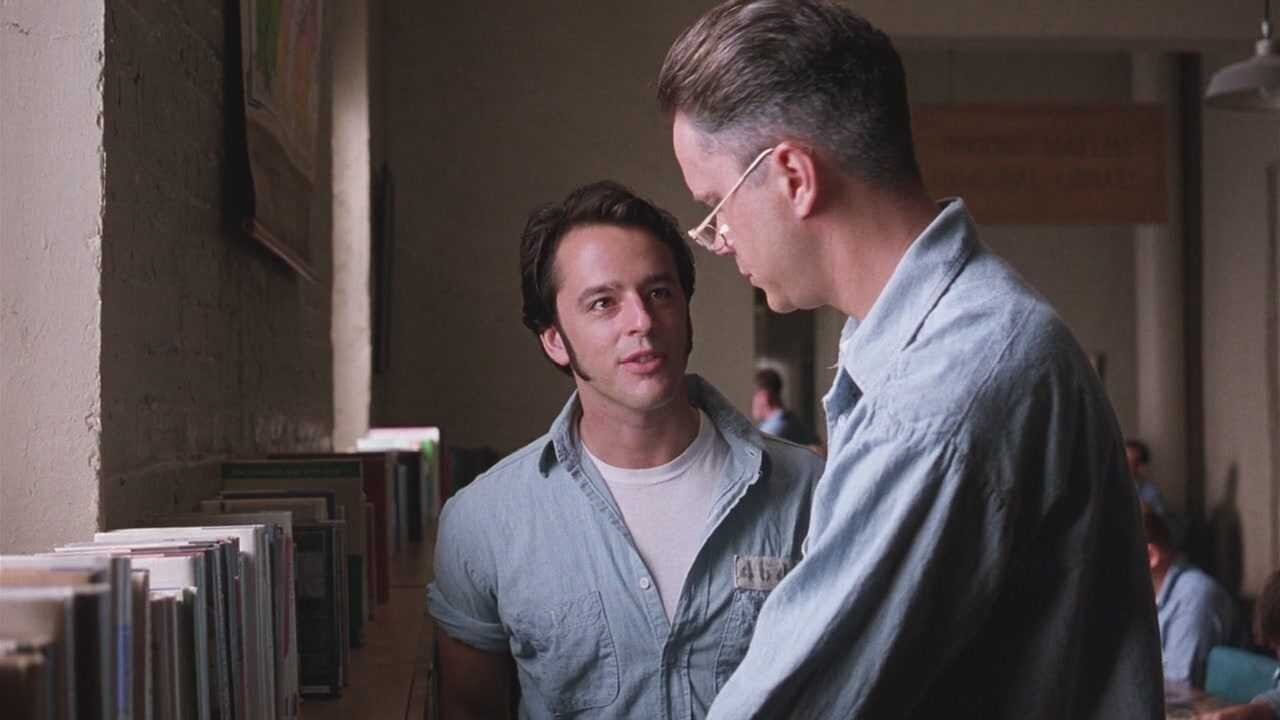
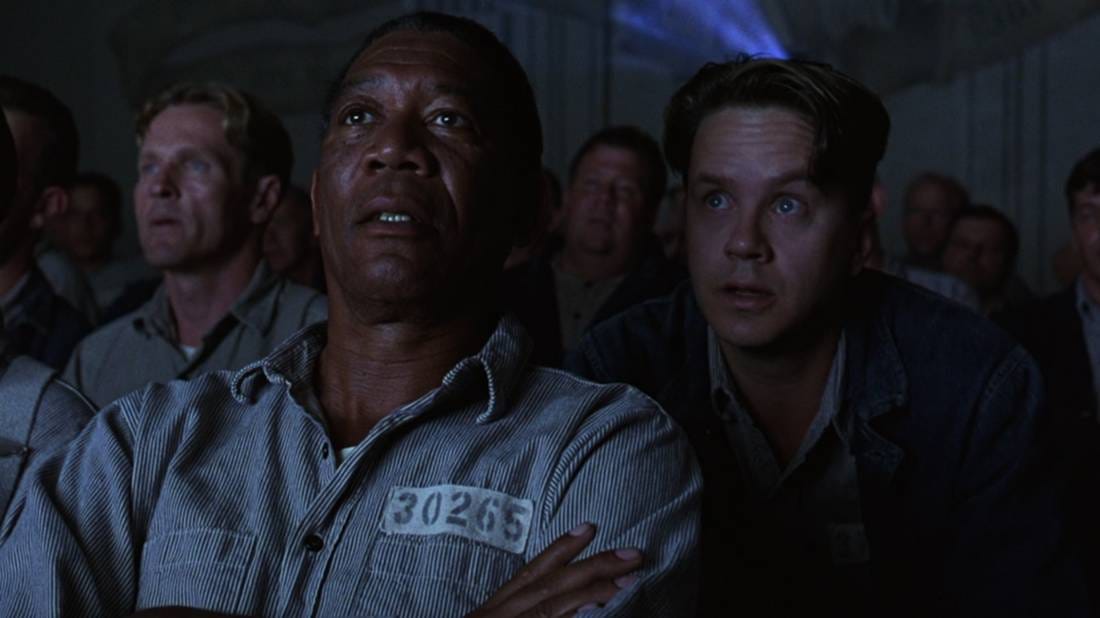


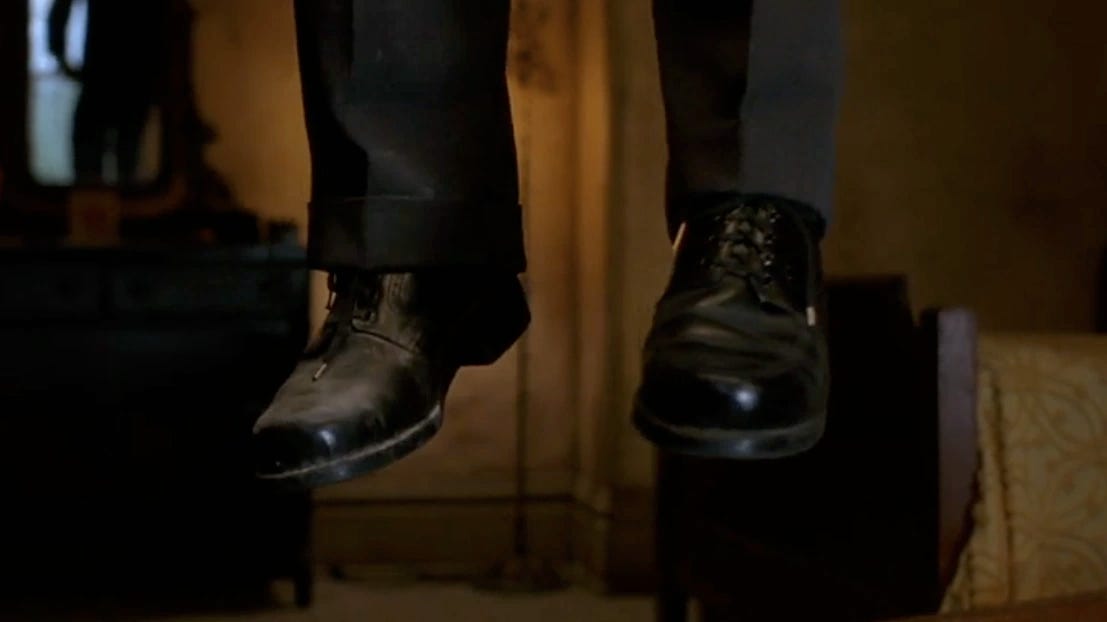
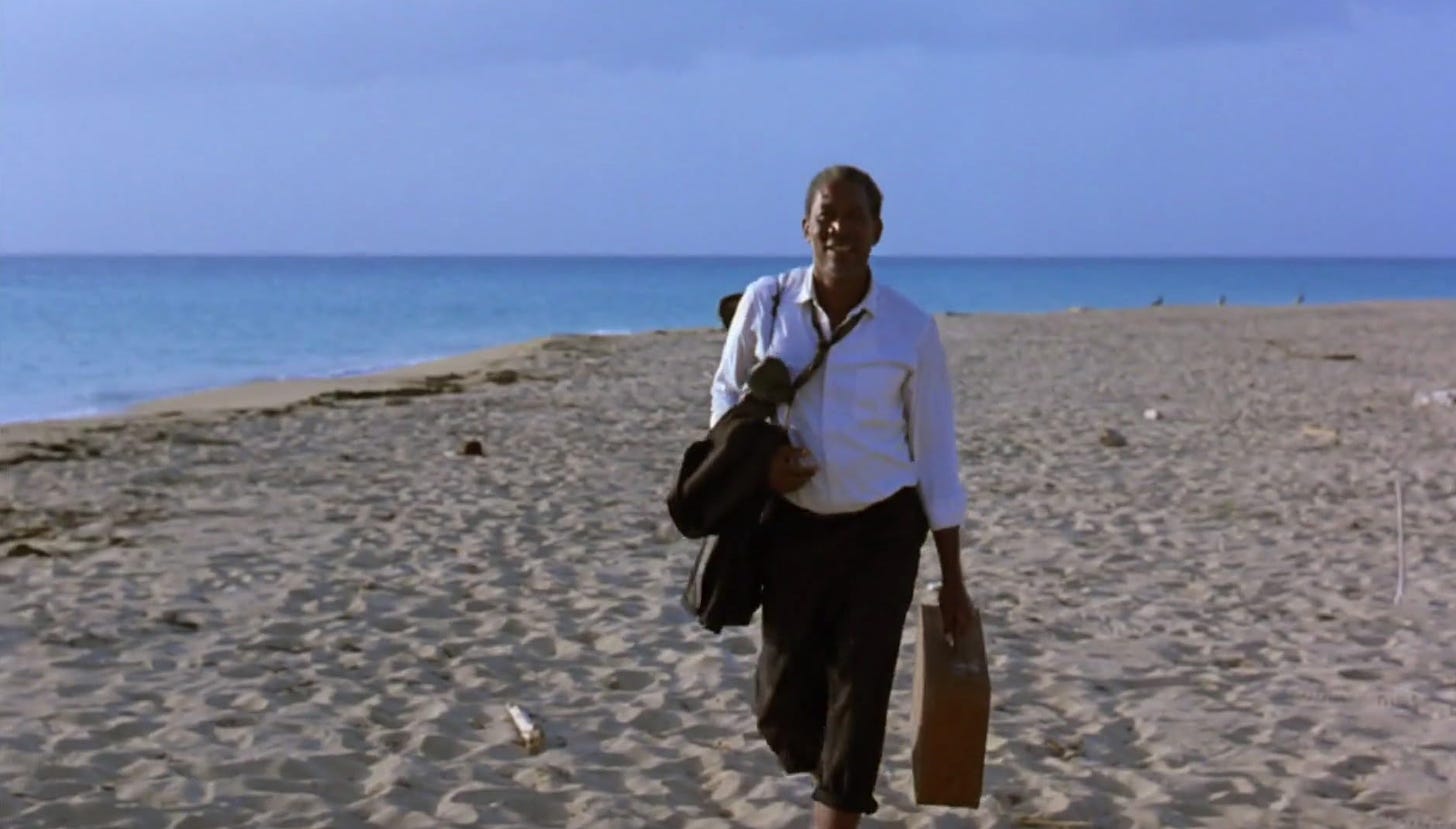
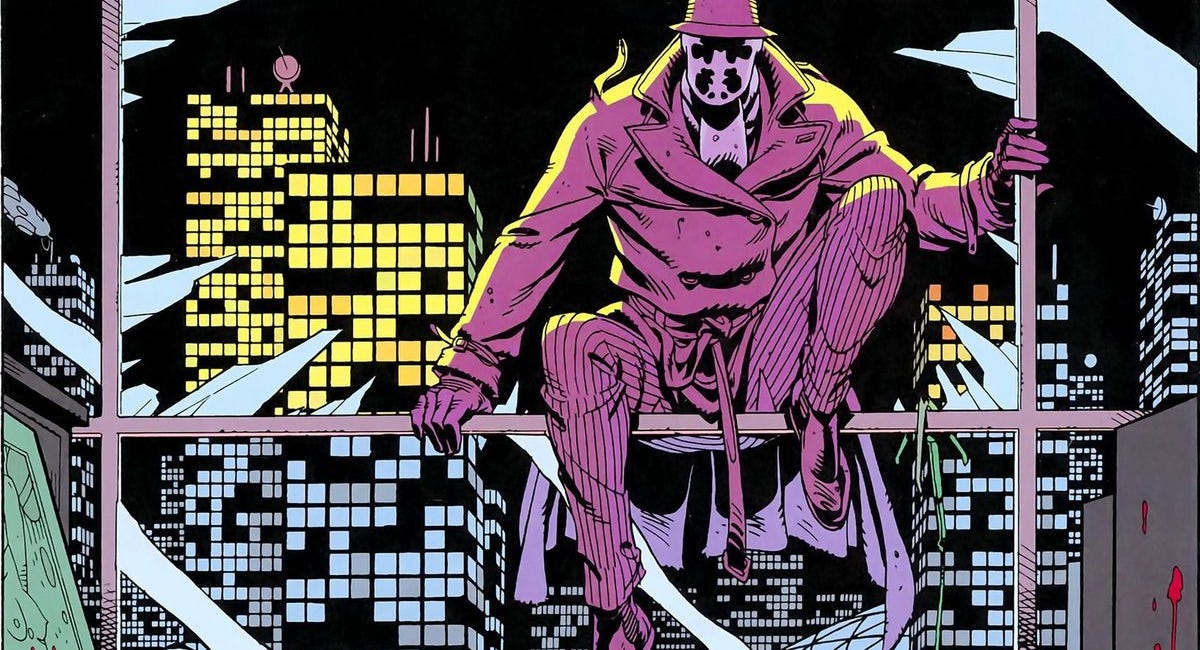
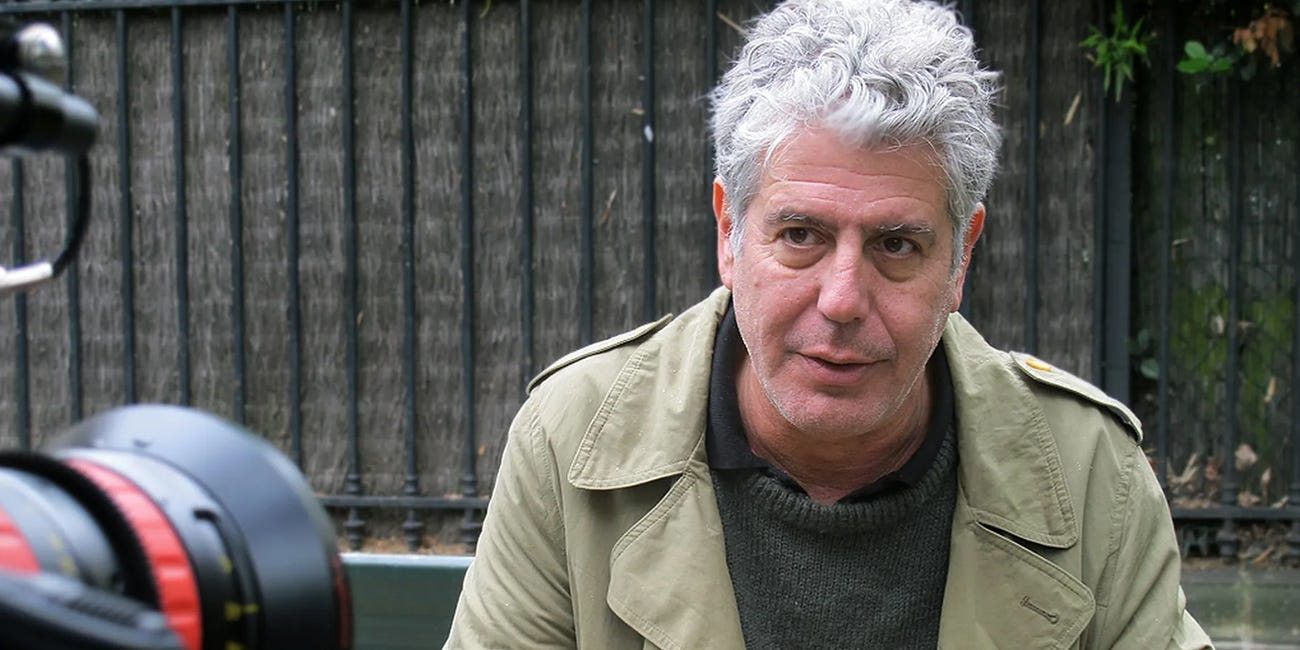

Well how about that. I just learned at 45 years that this movie was based on a King story. Sure maybe I’m the last person to know, but I’m happy that I do. Thank you!
The way you explored Darabont’s choices and how they enhanced the novella for the screen was well explained. It’s always a pleasure to see someone break down an iconic film with such care and understanding